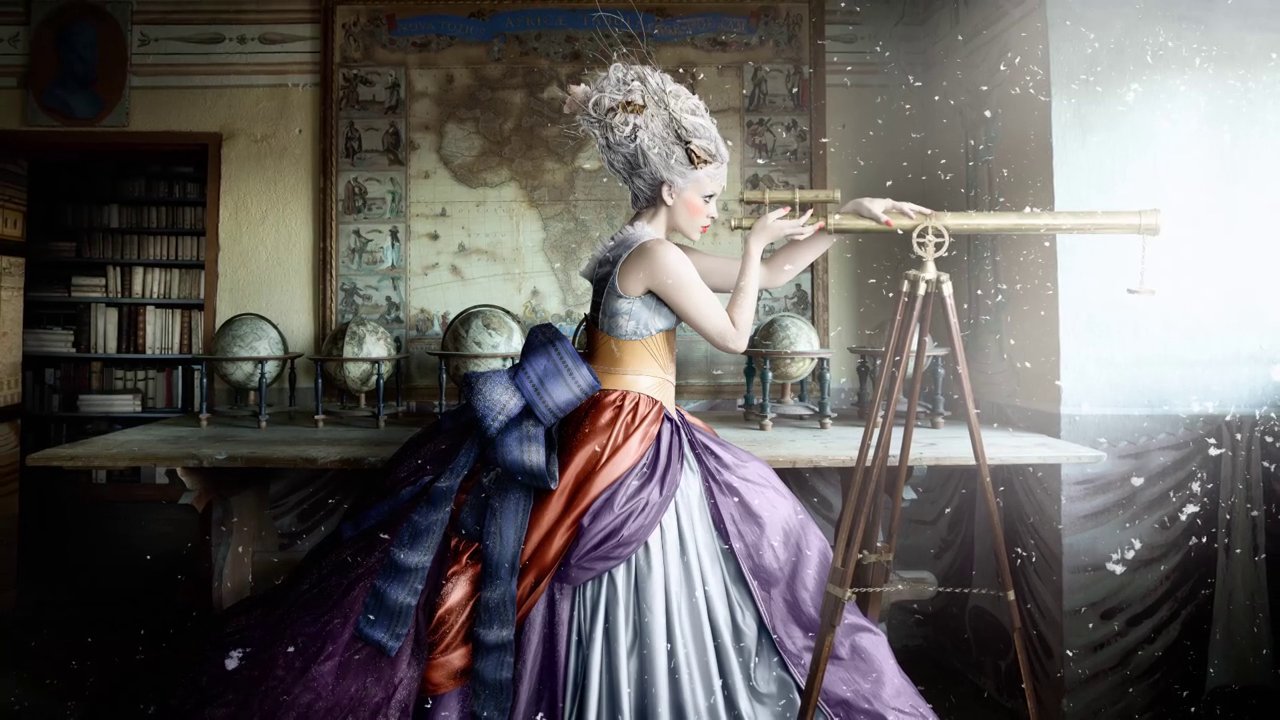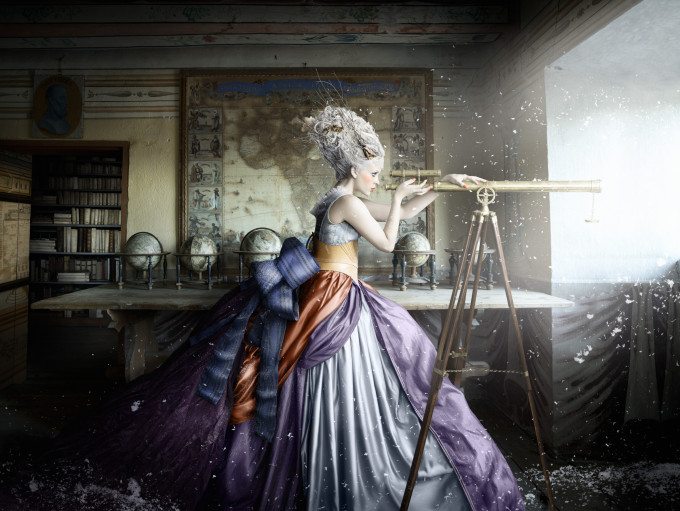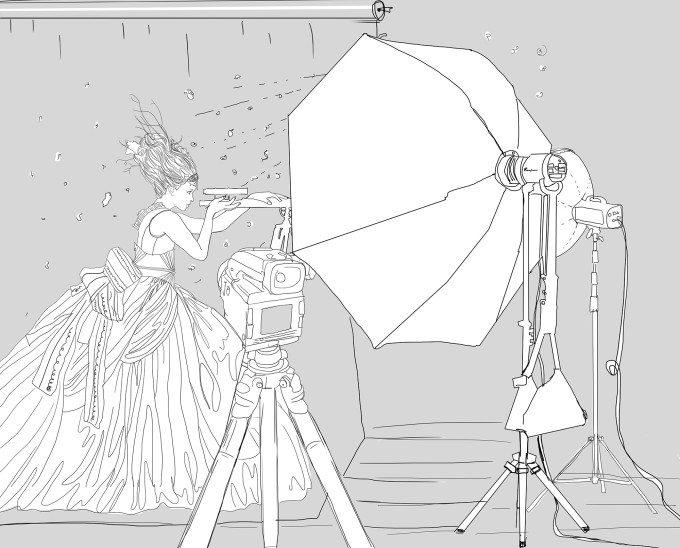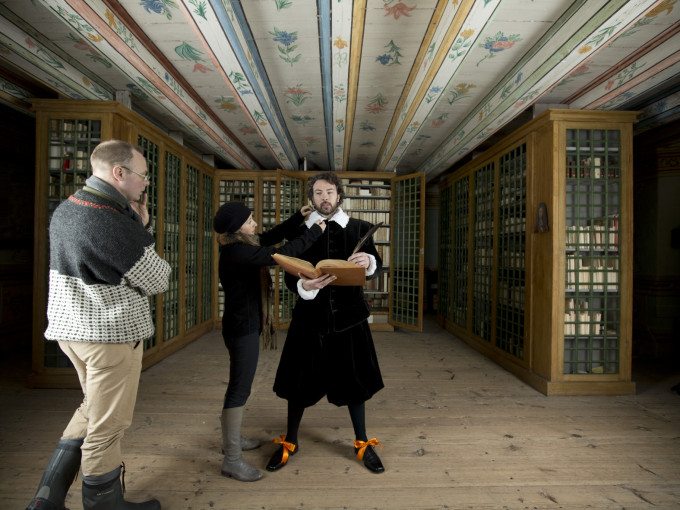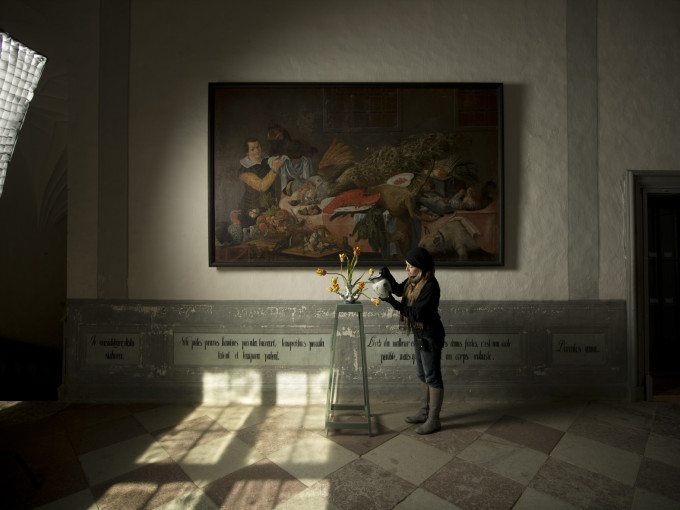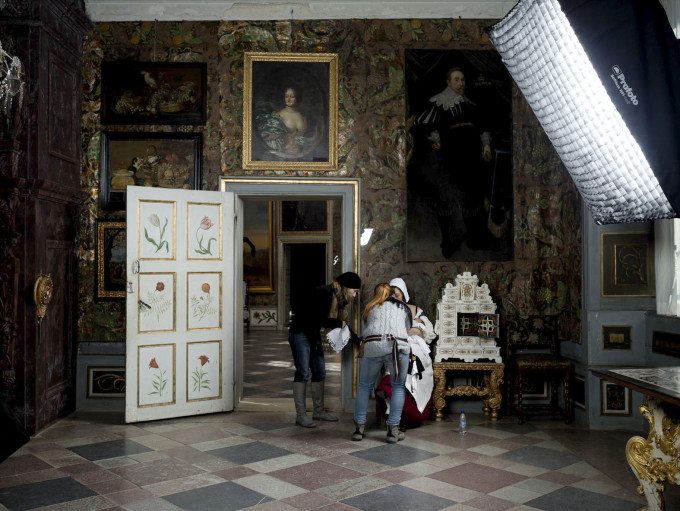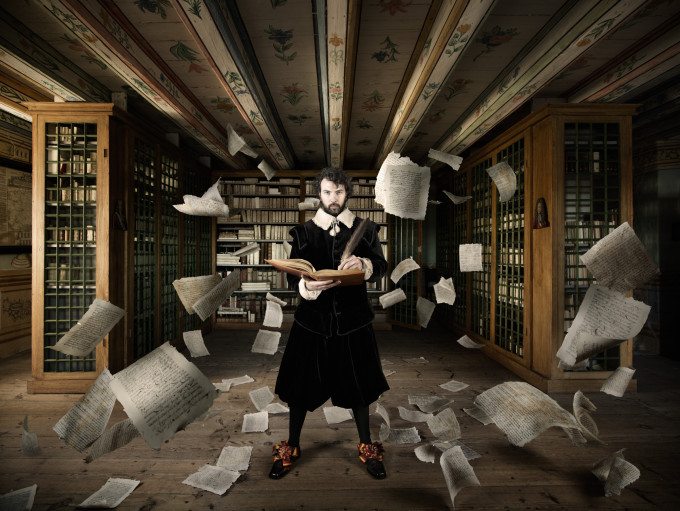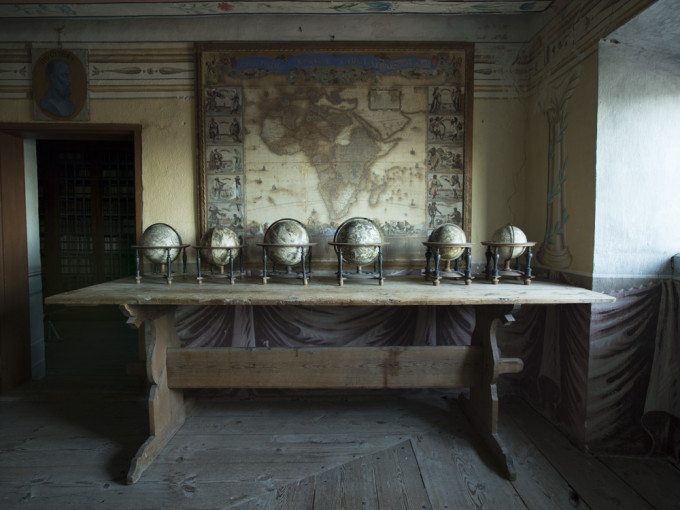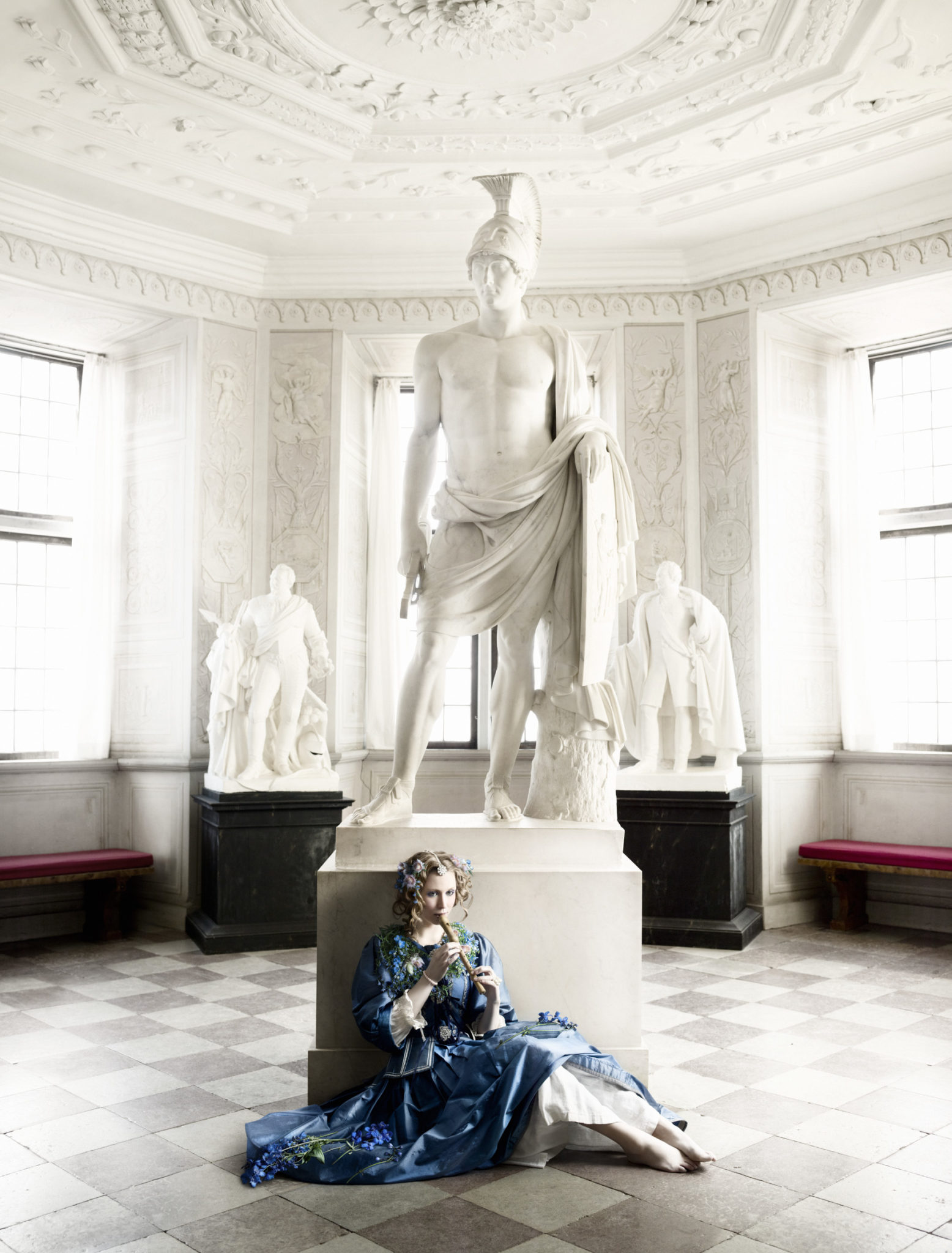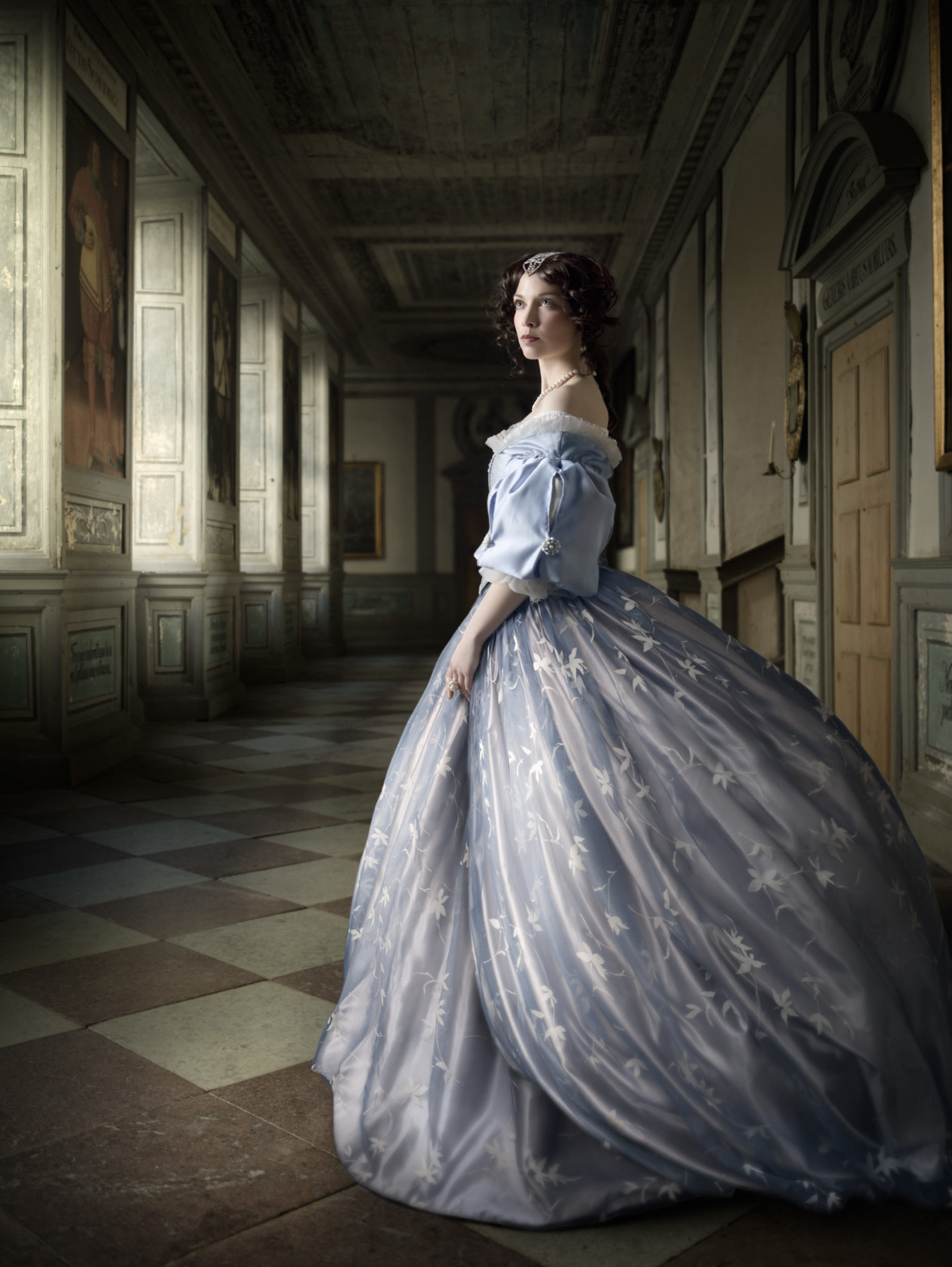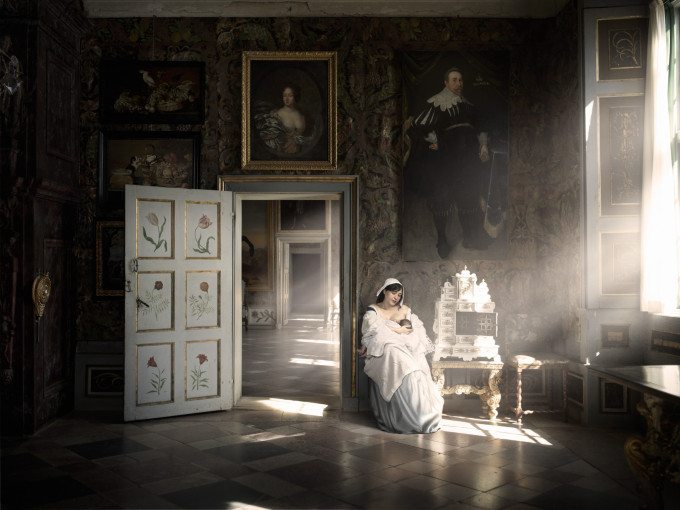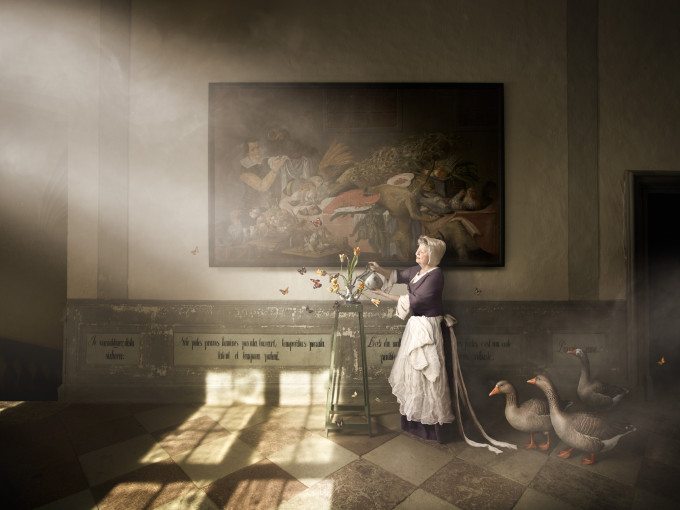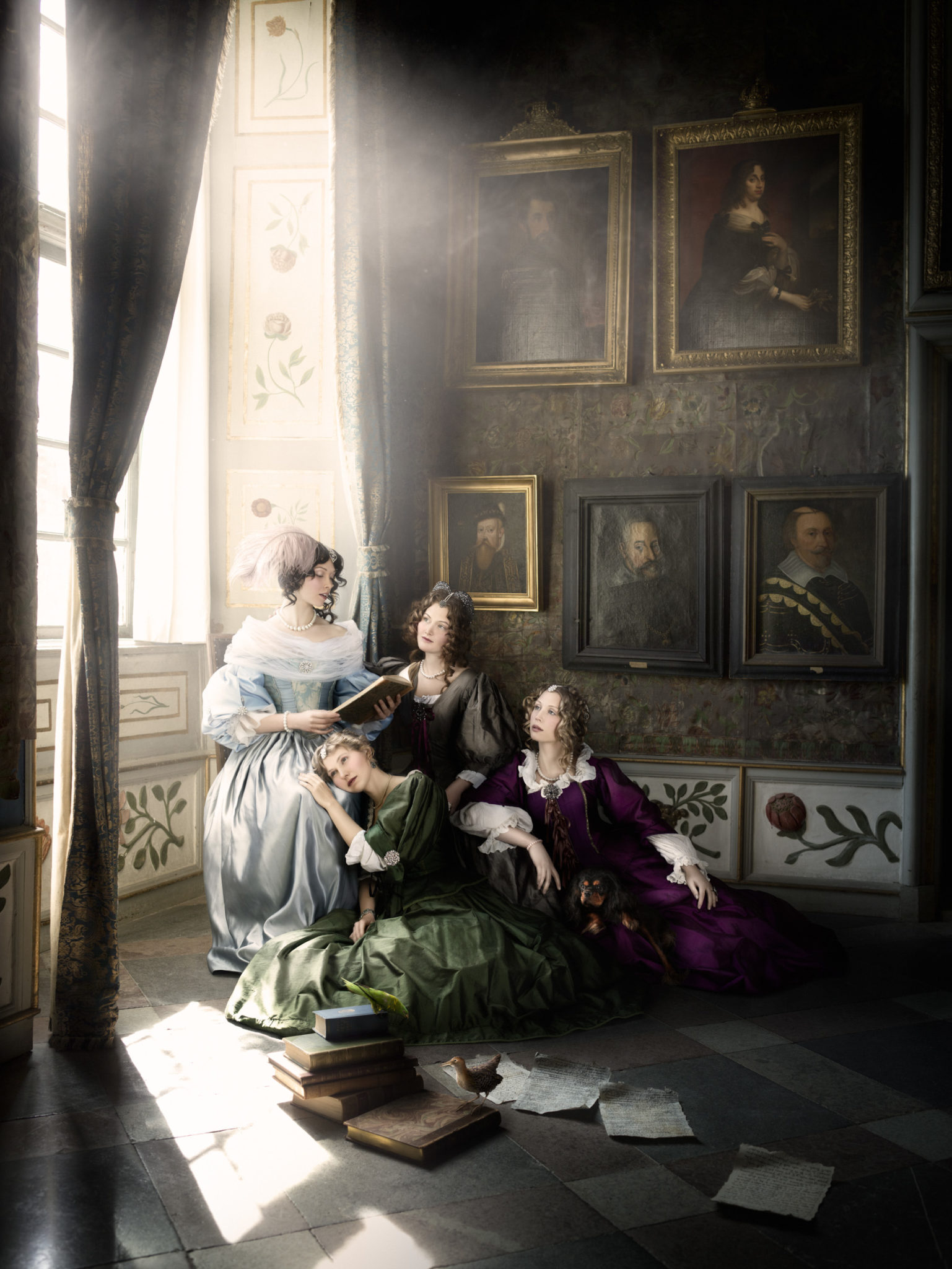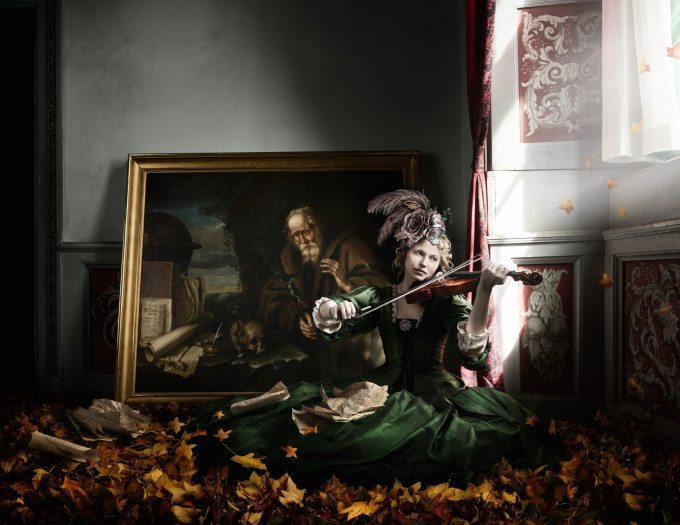Last Updated on 04/10/2014 by Chris Gampat
All images by Alexia Sinclair. Used with permission
Alexia Sinclair is a photographer and artist that hails from Australia. When we heard about her work on the Profoto blog, our jaws dropped. Alexia worked on a series called “A Frozen Tale” that took place in an old European Castle. The series turned into an extremely complicated production that involved quite literally chasing the sunlight from room to room on top of story boarding, makeup, and lots of post-production.
Here’s her story.
The Concept
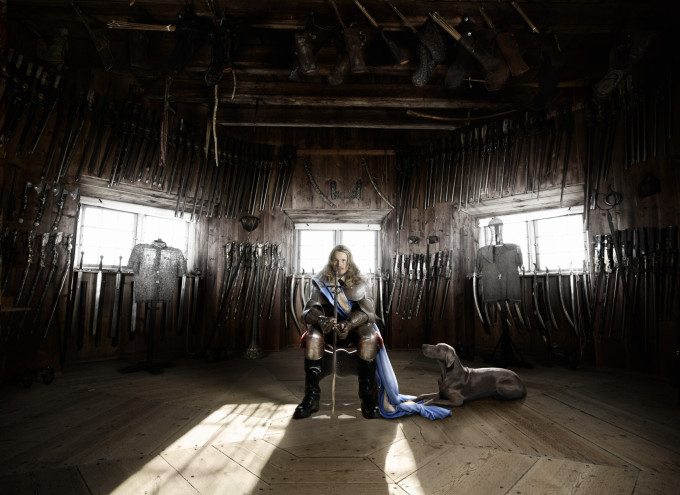
Last year began in a pretty exciting way. To begin with, I’d received an email from The Royal Armoury in Sweden asking me to exhibit at The Royal Palace in Stockholm, alongside famous collection enroute from the Vatican Library in Rome…and the fairytale began.
Next was an invitation from the palace that arrived in the mail, formally inviting me to attend the opening of the exhibition, a truly aristocratic affair, that being opened by the King’s sister. This really sparked my imagination.
What if I could photograph one of the Swedish Princesses or do a fashion shoot in the palace? Well it never hurts to ask! I could never have imagined that they would ever say yes! Well kind of anyway… the armoury invited me to do a photo shoot in their most famous castles, Skokloster Slott. I jumped on-line, my heart racing, clumsily typing a google search of the castle in my haste and excitement. What I read really whet my appetite for an epic Swedish adventure and immediately a story of castle life began to grow in my imagination.
The castle is considered the finest example of Baroque architecture in all of Europe. Described as a cabinet of curiosities inside a cabinet of curiosities, nothing could truly prepare me for the magnificence of each room and it’s collection.This 350 year old castle sat upon a frozen lake and had ice running through it’s core, which preserved the building and it’s contents like an icebox. Stuffed full of priceless collections of art, weapons and books, and this treasure chest was completely preserved and was now a museum and exceptional example of life in the 17th Century. I started to think about artworks in a series that could be themed to each room.
The Gear
The Cabinets of Curiosity still was shot in studio with:
PhaseOne IQ260 DB
PhaseOne 645DF+
Schneider 80mm LS ƒ2.8
Profoto Pro8a 2400 generator
2x ProHead
1x Profoto Soft-light Reflector aka (Beauty Dish)
1x Profoto 7’ Octa
Gitzo GT3541 Tripod
Induro PHQ3 Head
Tethered Macbook Air
Location background plate was shot with:
PhaseOne IQ180 DB
PhaseOne 645DF+
Schneider 80mm LS ƒ2.8
Edited on:
MacPro (2010) + Adobe Photoshop CC + Wacom Intuos 5
The video was shot with
A very battered and ageing Canon 5D-MKII
Canon 16-35mm
Canon CN-E 85mm
FOBA Amove Dolly
Kesslercrane PB Pocket Dolly
Edited on:
Macbook Pro (2013) + Adobe Premiere CC
The Shoot
A Frozen Tale from Sinclair & Hill on Vimeo.
I learnt early on that I had to do drawings, mood-boards and story-boards when I start a new project, or I become a complete insomniac. So I began the project as I do all of my projects…I had a theme and I could see a few examples of rooms in the castle, and so I began to study fashions and famous historical figures who had visited the building. I put together mood boards and planned shots. I put out social media calls for volunteers for my ‘epic swedish adventure’, searching for assistants and models of all shapes and sizes.
I studied paintings of the period and got swept up in the works of Vermeer and his study of the middle class and common person and this is something I really focused on in the series. But I’m never too far away from the grandeur of regal themes and several famous aristocrats and historical figures who had visited the castle also became anchors for a central theme within the series.
When I’m building a series, I’m working on many themes simultaneously, and always linking these themes back together into a series. But I’m also thinking a lot about the style and feel of the series and how I can logistically bring this to life. What really moved me most about paintings of this period was the atmosphere and this was going to become a big part of my approach to building this series. Before the advent of electricity, buildings were filled with soot and smoke from open fireplaces and ovens and rooms were lit with candles and the sun that poured through the giant windows. This was the atmosphere I planned to add to my series.
Once things start to fall into place, I have a location, I have models and assistants, I have costuming and themes I bring everything together into schedules and draw lighting diagrams and additional mood board treatments for my makeup team to follow. I can’t be everywhere at once, in prep for the next shoot whilst shooting the current artwork, so it’s really important I have these visuals to communicate with everyone and keep things on track.
I began to ask for permission to have animals and smoke machines on location and this is where things became even more challenging.
The first obstacle was that I was not allowed to have anything but lighting and models / assistants in the building. We couldn’t touch a thing, couldn’t sit on a thing, and it’s really hard for a model to interact with an environment in they’re not able to touch anything. So I needed to organise chairs and books that were not antique for the models to interact with, and replace them in post production at a later date. When you look at The Armoury, you would naturally assume that the model is sitting on that chair, next to a dog, with a blue sash dropping to the ground. Not so, these are all elements that were restricted and required to be added afterwards.
My next obstacle was that I could not bring in the atmospheric components that I so desperately wanted to shoot in camera. I always prefer to shoot as much as possible in camera. But this is not a high budget film and this castle is not my property and rules must be obeyed. In The Feast, the water pouring from the jug into the tulips, the geese, the butterflies, all shot afterwards and added in post.
It’s much much easier to have everything on set, shot in camera and just grade an image in post production. But these were unfortunately elements I would need to shoot and add afterwards. Of course, this is something that needs to be planned for in the actual location shoot. I would need props as stand-ins for my models because they can’t sit in mid-air, and my models, who are all really only volunteers and fans of my work, who live on the other side of the planet and I’d never met, well they’d need to role-play the interactions with the elements that weren’t really there.
Another challenge was the discovery that the lighting we’d organised in Stockholm was useless because there was no power in the castle… part of it’s preservation. This I discovered once we’d landed in Sweden and driven out through the woodlands to the frozen castle, arriving just as the sun set. We stepped into the icy Aladdin’s cave only to see darkness and be handed flashlights. Through the darkness we stumbled with little beams of light picking up small areas of various rooms. How on earth was I going to do twelve shoots here starting at 5am the next morning, when I couldn’t even do a recce? This rambling old building had so many rooms and even hidden rooms, within rooms, locked from the public and hidden by the dark night sky, and all I could do was hope that I could think fast enough on my feet to capture everything I wanted before flying back to Sydney.
We spent the next two days running from one incredible room to the next, I’ve never worked so fast. The story-boards and schedule went right out the window and I just had to think on my feet at every moment. I’d race through dozens of rooms, pick a spot, quickly speak to James about my lighting, and everyone would pack up the lights, race up and down stairs to the next location, and get set up before the incredible sun we were chasing had disappeared. I’d prep the next model and try to create an atmosphere that set the tone for the scene to unfold. There were so many magical moments and everyone involved was incredible.
Quite incredibly, we’d all made it through two enormously challenging and tiring days and we were on our final shoot. The scene was the library and this is something I’d planned from the very beginning. I’d read about a famous Italian diplomat who had visited the castle and written a controversial book about it’s inhabitants and famous visitors. I’d hand made paper with Italian script printed on each page that I sourced from the period and stained each page to act as a central prop that would appear in each artwork. In this final library scene, my Italian would stand in the centre of the room, the assistants would through the paper up in the air, to represent the anarchy he’d left behind when he wrote about Skokloster Slott. The crew threw the paper in the air like confetti to celebrate the final frame of the shoot… and it was then, from the corner of my eye, that I spotted the room…
The room was another library apartment, with a focus on The Age of Discovery. Any gentleman of the period would own a collection that would include maps and globes of exotic lands and the castle’s creator, count Carl Custaf Wrangel, was like a continental Prince who’d peacock his possessions for all the aristocrats to see. The room was extraordinary and I had to have it in my series. My challenges had become too great to shoot a model on location… the laptop we were tethered to was flat, my card has 3 frames left, the sun was disappearing, my models had gone home, my crew were beginning to look seriously rebellious… this would need to be a composite image. So, I set up my tripod and shot several long exposures with natural light filtering in through the window. Gleefully rubbing my hands together, I began to imagine the magic I could produce in this adventurous room.
Returning to Australia, I busied myself with sourcing and photographing all of the additional elements for the series, including the atmospheric smoky light to grade the series like the 17th century paintings I’d been inspired by when beginning the project. When I’d eventually completed all of the artworks we’d shot on location, it was now time to start planning my final artwork. Using the background plate I’d shot at the castle in Sweden, I sketched out the new costume to match the tonal palette of the room, and planned my studio shoot in Sydney. The style of the costuming and hair are indicative of the flamboyant 18th century styling found in much of my work, rather than the more conservative 17th century styling seen in the rest of the series.
The artworks that were shot on location are subtle and delicate in approach, and their stories are contained within the castle. In contrast, my aim with this final artwork was to produce a sensational image to serve as the hero image for the series. One that would capture the imagination of viewers and encourage them to look through the telescope also and come on an adventure to frosted foreign lands.
Post Production
When I work in the studio to produce composite work, I always shoot onto a grey background and predominantly mimic the light from the background plate. The background plate was shot with sunlight that filtered through the large window (camera right). So, back in the studio, we used a beauty dish to sculpt the model with a harder direct light on the window side, leaving the light to drop off behind her as if she was in the actual room. In addition to the key-light we set up one 7′ octa as fill, just to pull back the contrast.
The Cabinets of Curiosity is an artwork alive with movement as the icy snow particles float into the magical room. We achieved this by photographing plates of fake snow tossed through the studio around the model. Compiling this artwork was technically challenging because all of the little pieces of snow were selected by hand from the grey background and the hair was hand illustrated strand by strand. It was a finicky artwork, particularly as I was working on 80 megapixel raws with mind blowing detail. Working on large artworks and printing artworks large for exhibitions means every single detail needs to be accurate, which is really really finicky! But it’s detail in my work that I’m really excited about and it’s what people have come to love about my work… discovering a world within a world. A cabinet of curiosities, within a cabinet of curiosities.
The Cabinets of Curiosity explores the theme of adventure and discovery. In many ways, the invented character in this work symbolises my own exploration of the castle set on the frozen Swedish lake.
—–
A Frozen Tale is set to exhibit in Skokloster Slott in the European summer of 2014. It’s exciting to bring the work home to the castle, where all of the magic began. The series will then move on to Stockholm in the European Autumn / Fall.
The Cabinets of Curiosity – For a brief time only, and as a one time offer, I’m selling signed archival prints of The Cabinets of Curiosity for an extremely affordable price, sales from this will effectively crowd fund my next project. This sale closes forever on April 14th. For details on this, please see here.
Rococo – Next up is my new series ‘Rococo’. We’ve recently relocated to the Southern Highlands, an hour out of Sydney, to produce a lavish floral series. Throughout the year we’ll be producing behind-the-scenes videos showing the making of this series. To stay up to date, subscribe to my newsletter here.
Facebook: alexia.sinclair.
Twitter: @alexiasinclair
Website: alexiasinclair.com


